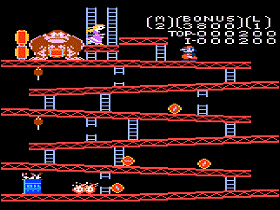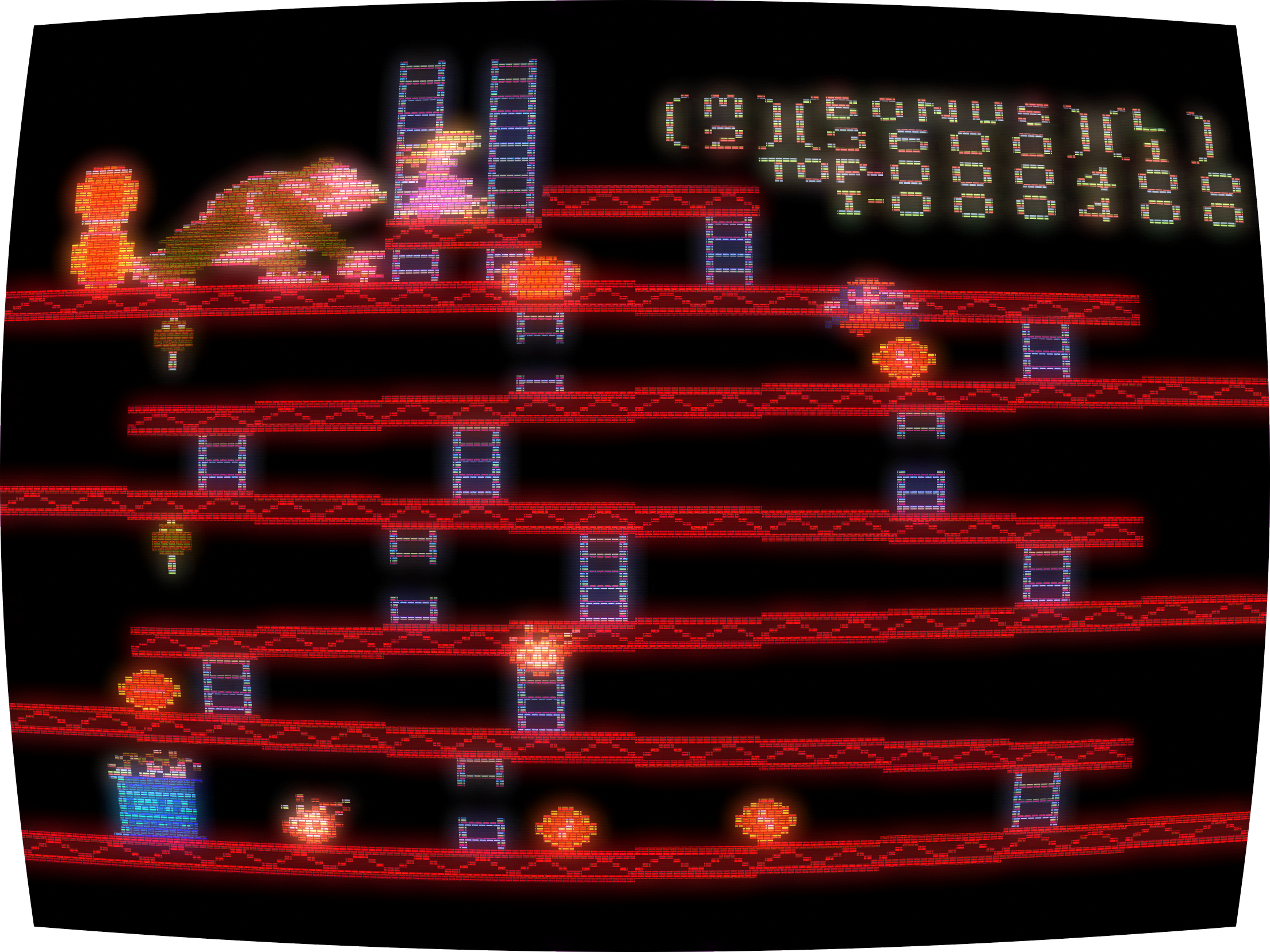 The Game: An oversized gorilla kidnaps Mario’s girlfriend and hauls her up to the top of a building which is presumably under construction. You are Mario, dodging Donkey Kong’s never-ending hail of rolling barrels and “foxfires” in your attempt to climb to the top of the building and topple Donkey Kong. You can actually do this a number of times, and then the game begins again with the aforementioned girlfriend in captivity once more. (Atari, 1988)
The Game: An oversized gorilla kidnaps Mario’s girlfriend and hauls her up to the top of a building which is presumably under construction. You are Mario, dodging Donkey Kong’s never-ending hail of rolling barrels and “foxfires” in your attempt to climb to the top of the building and topple Donkey Kong. You can actually do this a number of times, and then the game begins again with the aforementioned girlfriend in captivity once more. (Atari, 1988)
 Memories: Before Nintendo made its own inroads in the American home video game market, it happily let homegrown companies take the license and run with it. Coleco won the license for Donkey Kong for the cartridge-based console market, while Atari snagged the rights to release Donkey Kong for various computer systems. When Coleco folded (after the expensive Adam Computer debacle), Atari did the corporate equivalent of going through Coleco’s wallet and picking up its licenses.
Memories: Before Nintendo made its own inroads in the American home video game market, it happily let homegrown companies take the license and run with it. Coleco won the license for Donkey Kong for the cartridge-based console market, while Atari snagged the rights to release Donkey Kong for various computer systems. When Coleco folded (after the expensive Adam Computer debacle), Atari did the corporate equivalent of going through Coleco’s wallet and picking up its licenses.
 But by the time Coleco went under, Nintendo was already test-marketing a system that would come to be known as the NES. Nintendo was, of course, going to release its early arcade hits as first-party NES titles, but technically, Atari still had the rights as well. How better to thumb its nose at the new king of the video game industry than to release some of Nintendo’s own titles on the new Atari console?
But by the time Coleco went under, Nintendo was already test-marketing a system that would come to be known as the NES. Nintendo was, of course, going to release its early arcade hits as first-party NES titles, but technically, Atari still had the rights as well. How better to thumb its nose at the new king of the video game industry than to release some of Nintendo’s own titles on the new Atari console?
However, if this was a tactic to give Nintendo a black eye, one would think that Atari would be obliged to turn out a better game of Donkey Kong on the 7800 than Nintendo did  on the NES. Instead, it falls victim to some of the same flaws – the conveyor belt level is missing – and worse. The graphics look “squished” and the game audio barely sounds more advanced than the 2600 version. It’s a passable game of Donkey Kong at best.
on the NES. Instead, it falls victim to some of the same flaws – the conveyor belt level is missing – and worse. The graphics look “squished” and the game audio barely sounds more advanced than the 2600 version. It’s a passable game of Donkey Kong at best.
 This game wasn’t about to give Nintendo trouble – and by 1988, the NES library had evolved considerably past Donkey Kong.
This game wasn’t about to give Nintendo trouble – and by 1988, the NES library had evolved considerably past Donkey Kong.

